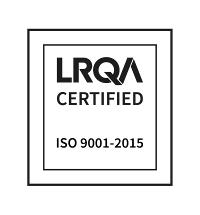Functional genomics platform of Nice
Expertise
The UCA GenomiX platform was established in 1999. Initially focused on the design, manufacturing, and analysis of DNA microarrays, it contributed to the popularization of this emerging technology by operationalizing cutting-edge biotechnological tools and an information system within a certified ISO9001 and NFX50-900 environment, enabling the production and management of large-scale data for over 20 years.
The platform’s current activity is centered on high-throughput nucleic acid sequencing. It has significant capacity to process large collections of samples, including at single-cell resolution and through spatial transcriptomics.
Routine operations are based on an Illumina NextSeq 2000 short-read sequencer and an Oxford Nanopore PromethION long-read sequencer, both available for DNA and RNA sequencing. Gene expression profiling at the single-cell/nucleus level is performed using 10x Genomics Chromium and Parse Bioscience technologies (scRNA-seq, scVDJ-seq, scATAC-seq, etc.). The platform is a pioneer in long-read RNA sequencing at single-cell resolution (ScNaUmi-seq, SiCeLoRe) and spatial resolution (SiT). It is also equipped with Merscope (Vizgen®) and Xenium (10x Genomics®) systems for spatial transcriptomics analyses, enabling the parallel study of up to 5,000 genes.
The platform is currently staffed by 5 wet lab engineers and 2 bioinformaticians. It is constantly looking for new talent.
Equipments
- Pre-sequencing: Nanodrop™, Bioanalyzer, Qubit®, BluePippin
- Single-cell analyses: Chromium X (10x Genomics®), Parse Biosciences®, FLASH-seq (UMI-Single Cell / UMI-Bulk)
- Bulk analyses: mRNA-seq, total RNA-seq, miRNA-seq
- Sequencing: Illumina NextSeq 2000®, Oxford Nanopore Technologies® MinION and PromethION
- Spatial transcriptomics: Merscope (Vizgen®), Xenium (10x Genomics®)
- Robots: Assist Plus (Integra®), Opentrons

Bioinformatics analysis
The Nice platform automatically provides sequencing reports tailored to specific requests, integrating differential expression analysis and quality controls:
- Sequencing quality control (FastQC, MultiQC),
- Data filtering and cleaning,
- Read alignment against a reference sequence (STAR, bowtie2, lifescope).
DNA Analysis
- Genome/Exome resequencing, alignment, detection of SNPs, indels, structural variants, CNVs, annotations.
- De novo assembly of small genomes < 50Mb (Abyss, Spades, Velvet, SOAP).
RNA Analysis
- RNA-Seq, differential expression analysis (normalization and contrasts between conditions) (STAR, Salmon, TrimGalore, Epi2me, DESeq2, limma, edgeR et IPA), functional annotation of results. Generation of an experimental report in PDF/HTML format summarizing quality controls and differential expression analysis.
- SmallRNA-Seq (miRNAs, piRNAs, snoRNAs, tRFs, ensembl ncRNAs, fRNAdb): analysis via a standardized pipeline including two-phase mapping (STAR, Bowtie2), detection and annotation of unannotated expression regions (MACS2), differential expression analysis (normalization and contrast comparison) (DESeq2, R Bioconductor package), result annotation. Provision of an experimental report in PDF format summarizing quality controls and differential expression analysis.
- de novo RNAseq (khmer normalization and trinity assembly),
- single-cell RNAseq (10x Genomics®, Parse Bioscience): normalizations, clustering, differential expression (Seurat, scanpy).
Nanopore
Analysis of data generated by Oxford Nanopore technology for the study of long reads and fine identification of isoforms. Use of dedicated tools such as Epi2Me, dorado or minimap2 as well as samtools for pre-processing, alignment, error correction and annotation. Detection and quantification of isoforms, study of transcript structure (alternative splicing, methylation), with synthesis of results. Generation of a PDF or HTML report incorporating quality controls specific to long reads (length, error rate, sequencing quality).
Spatial Transcriptomics
- In situ hybridization technologies combined with fluorescence imaging:
- Xenium (10x Genomics®)
- Merscope (Vizgen®)
- Normalization, clustering, differential expression analysis (Scanpy), visualization of annotated cells and transcripts within tissue (Squidpy, Xenium Explorer, Merscope Visualizer)
The results are automatically stored on the Médiante information system, which provides alignment .BAM files, coverage .BW files, xenium and merscope outputs, as well as all secondary analysis and statistical analysis files conducted in collaboration with the partner. Raw data can also be made available, and assistance is provided for submission to public databases (Gene Expression Omnibus, European Genome/Phenome Archive).
Update: July 2025

Certification / Quality Assurance
All platform activities are ISO9001 certified since 2006. From the outset, the development of the Mediante information system has provided all platform collaborators with an online tracking system, allowing them to track the status of their samples and obtain simplified access to all their results.

Platform Managment
Pascal Barbry
Institut de Pharmacologie Moléculaire et Cellulaire du CNRS, UMR7275,
CNRS/Université de Nice-Sophia-Antipolis
660, route des lucioles
06560 Valbonne-Sophia-Antipolis.
Contacts
Pascal Barbry : barbry@ipmc.cnrs.fr
Marie Couralet : couralet@ipmc.cnrs.fr
Marie-Jeanne Arguel : arguel@ipmc.cnrs.fr
Géraldine Rios: rios@ipmc.cnrs.fr
Laëtitia Gaigeard (Bioinformatique) : gaigeard@ipmc.cnrs.fr
Guillaume Beaumont (Bioinformatique) : beaumont@ipmc.cnrs.fr

